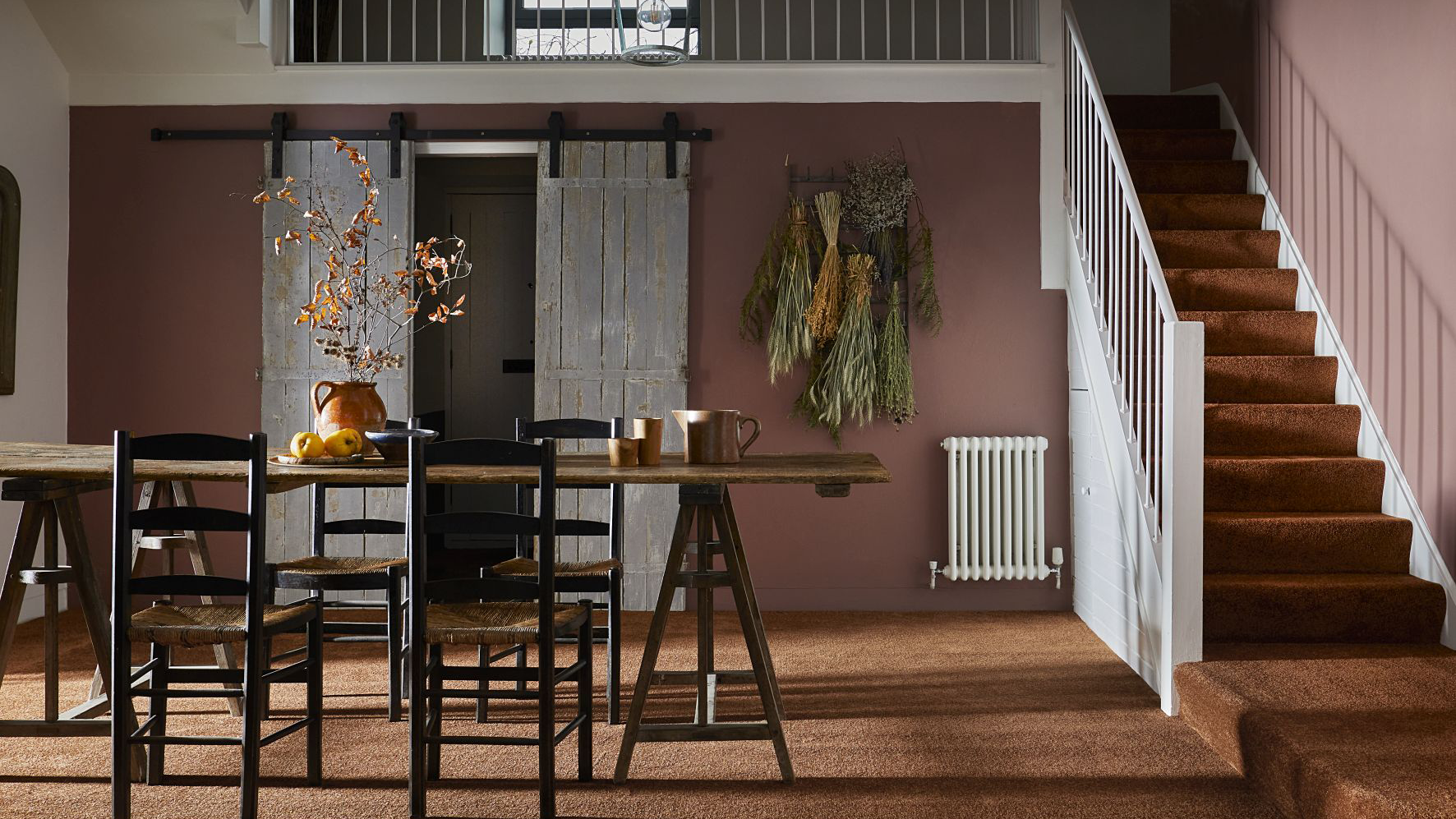How to Measure Carpet For Stairs in Four Easy Steps
Knowing how to measure carpet for stairs will make pricing up and buying the right. Follow our guide for standard stairs, half landings and corner stairs

Knowing how to measure carpet for stairs is key to buying exactly how much you need. Measure up wrongly and you could be left with enough carpet to do the stairs three times over.
Or worse, you underestimate how much carpet you need and are left three steps short. This could have a double whammy when you head back to the store — sold out, or the colour match is not quite the same.
In an ideal world your carpet needs to match with your stairs style. You might be renovating an old staircase or you're in need of some modern staircase ideas. Whatever stairs you have you still need to make sure that you are measuring up correctly for the carpet.
Here we give you a quick, simple, straightforward guide on how to work out how much carpet you are going to need to finish off your stairs.
How To Measure Carpet For Stairs: Where to Start
Before you measuring carpet for stairs, you'll need to a few items to hand:
- Pen/Pencil
- Paper
- Tape measure
This method for measuring carpet for stairs is for standard straight stairs with a landing at the top.
1. Draw out a plan
This is not an essential step in the process but it is a good idea to sketch out the area that you want carpeted as a reference point. You can mark down your measurements and then double and triple check that they are right. When finished you can make your calculations on the paper. It’s easier than trying to remember them in your head.
2. Measure the landing
At the top of your stairs you will have a landing area that continues on from your top step. Typically this will be a small area the same width as the stairs. Simply measure the width and depth/length of the landing and mark down on your sketch. This gives the area for the landing, e.g 1m x 1m = 1m/2
3. Measure the stairs
Kick off by counting how many steps you have on your stairs. Now choose a step to measure – try one in the middle or near the bottom – and measure the tread (the flat bit you step on) from the back and over the edge of the step to the riser (the upright bit). Now measure the riser and add together to get the whole step length.
Also measure the width of the step and note down on your plan.
4. Get the final result
Take the length of the tread and riser and multiply by the width of the stair to get the area for a single step, e.g: 0.45m x 0.75m= 0.33/m2.
Now multiply this by the number of stairs i.e.: 11 x 0.33m = 3.63m/2.
Bring your dream home to life with expert advice, how to guides and design inspiration. Sign up for our newsletter and get two free tickets to a Homebuilding & Renovating Show near you.
Finally add in the landing area i.e. 0.82m x 0.88m = 0.72m/2 to get the final total.
In this example it is 4.35/m2. Round this up to 5/m2 to ensure you have enough carpet. (Always add on a minimum of 10% to account for wastage.)

How To Measure Carpet For Half Landings
This is a very similar process to measuring a standard landing. Measure from the back of the landing adjacent to the top step – on the stairs going down – to the bottom of the riser and then the width and multiply together.
This will help ensure that the carpet will fit over the landing and top step with one piece of carpet making it harder to spot any joins.
If you do any painting after the carpet has been laid make sure you prep properly so not to get paint on the carpet. However, if you do, don't panic, it's simply a matter of knowing how to get paint off carpet. And the quicker you do it the easier it will be.
Measuring Carpet For Stairs with Winders
If your staircase design features a corner with irregular shaped steps (these are known as winders) then the measuring process is slightly different.
For each winder – you will need to measure individually as they will be slightly different in size. First measure the riser and tread – should be similar to the rest of the stairs – and then along the widest part of the winder. Repeat for each winder and add together to get the final area.
If the paintwork gets chipped or marked when being fitted you will need to repaint without getting paint on the carpet. This is a very similar process to painting skirting boards with carpet. You'll need some painter's tape and dust sheets.
Steve Jenkins is a freelance content creator with over two decades of experience working in digital and print and was previously the DIY content editor for Homebuilding & Renovating.
He is a keen DIYer with over 20 years of experience in transforming and renovating the many homes he has lived in. He specialises in painting and decorating, but has a wide range of skills gleaned from working in the building trade for around 10 years and spending time at night school learning how to plaster and plumb.
He has fitted kitchens, tiled bathrooms and kitchens, laid many floors, built partition walls, plastered walls, plumbed in bathrooms, worked on loft conversions and much more. And when he's not sure how to tackle a DIY project he has a wide network of friends – including plumbers, gas engineers, tilers, carpenters, painters and decorators, electricians and builders – in the trade to call upon.

